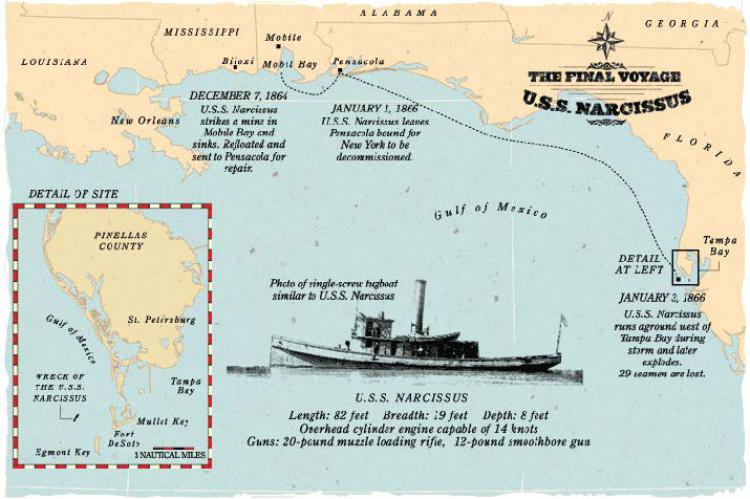Civil War-era warship poised to become underwater archaeological preserve
The USS Narcissus which sank near Egmont Key in 1866 during a winter storm is slated to become Florida's 12th underwater archaeological preserve. The USS Narcissus participated in the Battle of Mobile Bay where it was sunk by a torpedo and later refloated, It ran aground on a shoal northwest of Egmont Key and sank in 15 feet of water after its boiler exploded. No one survived.
The Narcissus, an 81-foot, 6-inch wooden tugboat built in Albany, New York, in 1863, was commissioned by the federal government to enforce the Union blockade of Southern ports during the Civil War, serving under the command of Adm. David Farragut.
Its shallow draft allowed the ship to lurk around tributaries and inlets and watch for blockade runners. Because of its ability to operate in shallow water, it was called a “bar tender,”
The ship was hit by a torpedo in December 1864 and sank to the bottom of Mobile Bay, but the Navy raised the ship and towed it to Pensacola for repairs. After the Civil War, it was bound for New York to be decommissioned when it sank in a squall near Egmont Key with the loss of twenty-seven crew members.
A spokeswoman for the Florida Department of State said the only holdup is a permit under review by the U.S. Army Corps of Engineers.
Taking part in the process to designate the preserve are the Florida Department of State, The Florida Aquarium and the Navy. It is the first time the Navy, which continues to claim ownership of the vessel, has granted permission to allow one of its ships to be recognized in this manner.
"Technically," said Mike Terrell, dive training coordinator at The Florida Aquarium, who along with two other archaeologists nominated the site for designation, "it's still a war grave because all of the men were on it when it sank.
The designation is expected to make the wreck a destination for scuba divers and boost the tourist trade along Pinellas County beaches and in local dive shops.





























